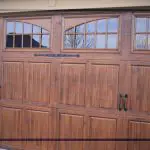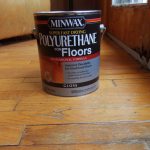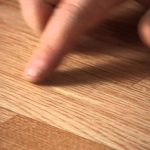How To Apply Polyurethane Without Brush Marks: All The Techniques You Need To Know
Brush marks are the last thing you want when applying polyurethane. Well, there are techniques that you need to follow to get a smooth surface that doesn’t have brush marks.
So how to apply polyurethane without brush marks? Clean the surface properly before applying polyurethane and choose the right type of polyurethane depending on the surface. Sand the surface between multiple coats and thin the polyurethane. Lastly, make sure to apply thin coatings.
These are just briefs and certainly shouldn’t make enough sense now. Well, don’t worry as we will go in-depth with all the techniques that you need to follow to achieve a fine finish. Let’s get started.
How To Apply Polyurethane Without Brush Marks
In this section, we are going to cover 8 techniques you need to follow to apply polyurethane with a fine finish without leaving brush marks.
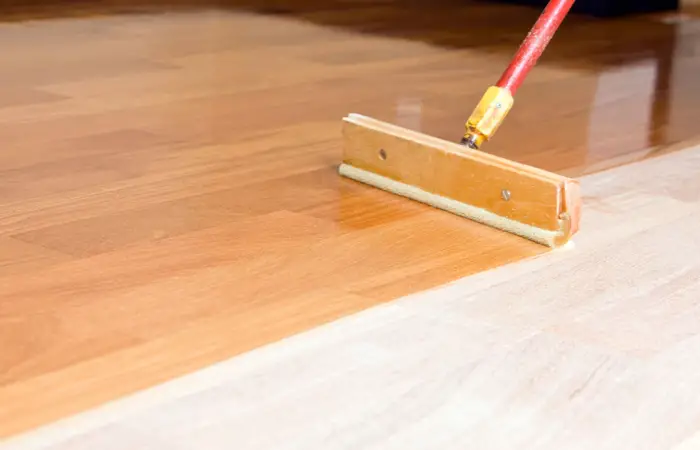
1. Choosing The Location
Even though the location where you apply polyurethane on an object seems unreasonable, it isn’t. It’s best to work in a well-ventilated area to ensure that the air circulates properly to achieve an even drying.
Moreover, it helps the object not to dry quickly, which can lead to brush marks as the brush strokes become visible on the surface. So even though it would take time to dry, you will end up with an even finish.
Therefore, when choosing a location to apply polyurethane, ensure the place is well-ventilated for even drying.
2. Type Of Polyurethane
There are several types of polyurethane available on the market such as Flexible Polyurethane Foam, Polyurethane Adhesives, and Polyurethane Coatings.
Moreover, there are polyurethanes that are water-based and some are oil-based. You must choose the right type depending on the material you are coating. For wood, always go for water-based polyurethane.
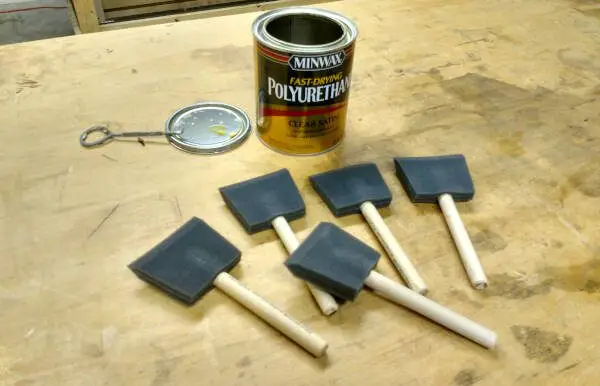
Whereas for concrete, go for oil-based ones. Lastly, it is advisable to use polyurethane specifically formulated for metal applications.
This way, you can ensure that you receive a fine and clear coating that prevents brush marks. The rule of thumb is to read the manufacturer’s guideline on the product and you can find out easily whether the material is suitable for it or not.
3. Clean The Surface
Before you start to coat, you need to clean the surface with sandpaper. This ensures that no dirt or debris will interfere with the final finish and will not form any brush marks.
Similarly, sandpaper cleaning also helps bond the polyurethane with the material easily. As the oil or grease on the material will be removed, it helps the polyurethane stick to the material better. Overall, this certainly is a plus point.
When it comes to sandpaper, it’s recommended that you use 600-grit sandpaper for an even finish.
4. Thinning The Polyurethane
As polyurethane is quite thick, the brush may absorb too much of it and leave marks on the finish. Thus, thinning plays a vital role here, which is the method of adding a solution or a thinner to the polyurethane. You can read the manufacturer’s guidelines for thinning if you don’t know how to do it.
For oil-based polyurethane, it’s recommended that you use mineral spirit or paint thinner as a solvent. Conversely, for water-based polyurethane, use water as a thinning agent. Nevertheless, here’s the video of thinning that might help you with the process;
5. Proper Way Of Applying
To ensure none of the brush marks are present, you need to use the proper method of applying the polyurethane. Don’t just dip the brush into the bucket that is filled with polyurethane.
Rather, separate a small portion of it into another small bucket. Following this method will ensure that an excess amount of polyurethane is not present on the bristles.
Lastly, make sure you go for long single strokes while keeping in mind to keep the coating even.
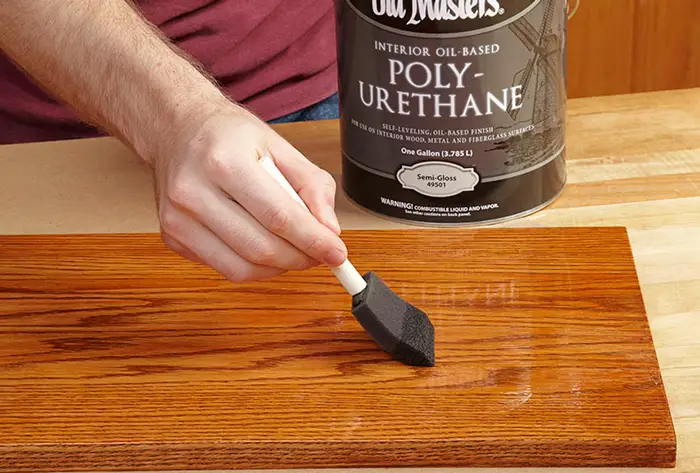
6. Use High-Quality Brush
Investing in a high-quality brush is ideal to ensure no brush marks are present. A cheap brush lacks high-quality bristles that do not hold and distribute the polyurethane evenly.
Also, cheap brushes don’t have a higher number of bristles, increasing the likelihood of excess material being left on the surface.
7. Leveling The Surface
One of the most effective techniques that you can use to avoid brush marks is leveling the surface. You will come across scenarios during the coating process where the coating will not be even. In this type of situation, the leveling process comes in handy.
You can either use sandpapers or leveling compounds for this process. For sandpapers, simply sand the uneven areas with your hand. On the other hand, the leveling compound can only be used for wood. You need to follow the manufacturer’s guidelines for the process.
8. Multiple Coatings
Coating the object multiple times is a must. This ensures enough coverage or thickness to completely hide any brush marks that may occur during the process.
The following coats fill any brush strokes that remain after the first coat. The additional layers increase the thickness and coverage, improving the ability to conceal any brushing-related flaws.
Tips And Tricks To Keep The Polyurethane Coating Smooth
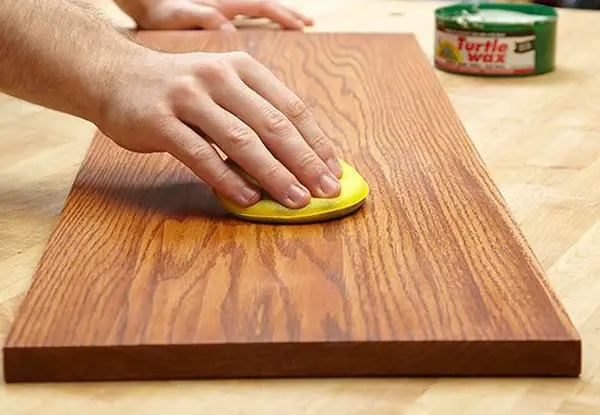
Here are some tips and tricks that will help you with the coating;
- Avoid applying polyurethane in extreme heat or cold as it can affect the drying process and result in an uneven finish.
- The ideal temperature for coating polyurethane is 21°C.
- Sprayers can help achieve a smoother finish compared to traditional brushes.
- Always brush in one direction while applying polyurethane.
- Stir the polyurethane gently to avoid creating air bubbles.
- Wait at least 24 hours before excessive handling of the coated surface.
- Regularly clean and maintain the surface according to manufacturer recommendations.
FAQ
Let’s check out some commonly asked questions regarding this topic.
Q. Can I use a hairdryer to speed up the drying process of polyurethane?
No, you shouldn’t use a hairdryer to speed up the drying process. It will only result in an uneven finish. Rather, let nature do its job for natural drying. Moreover, there will be side effects such as bubbles on the surface and less durability.
Q. What is the recommended ratio of thinning agent to polyurethane?
The ratio depends on many factors, such as the type of polyurethane and the surface. However, the recommended level for water-based polyurethane is 20% water, whereas 10% mineral spirit is enough for oil-based ones.
Q. Can I apply polyurethane over an existing finish?
It depends on the existing finish’s condition. If it is a free finish, applying polyurethane is a viable option. On the other hand, if it is deteriorating, removing the existing finish is recommended before applying polyurethane.
Conclusion
To conclude, the answer to how to apply polyurethane without brush marks revolves around 8 techniques. Start by cleaning the surface using sandpaper and choosing the right type of polyurethane. Make sure to thin out the polyurethane and apply long and even strokes.
Lastly, don’t forget to use sandpaper to level the surface and multiple coatings to prevent brush marks. Even though all these techniques seem hard to remember, you will get used to them. Moreover, apply them naturally the next time.

